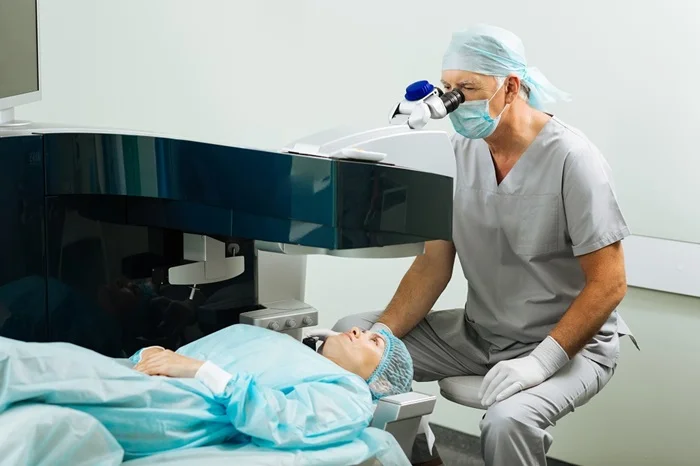Laser eye surgery, particularly LASIK (Laser-Assisted In Situ Keratomileusis), has revolutionized vision correction, providing many individuals the freedom from glasses and contact lenses. As patients recover from the procedure, a common question arises: Can you fly after having laser eye surgery? Understanding the implications of air travel post-surgery is crucial for ensuring a safe and comfortable experience. This article will explore the recovery process, recommended waiting periods, potential risks, and essential precautions to take when flying after LASIK surgery.
Understanding LASIK Surgery
What is LASIK?
LASIK is a popular refractive surgery designed to correct common vision issues such as myopia (nearsightedness), hyperopia (farsightedness), and astigmatism. The procedure involves reshaping the cornea using a laser to improve how light rays enter the eye, resulting in clearer vision. Most patients experience significant improvements in their vision shortly after the surgery, leading to increased interest in resuming normal activities, including air travel.
The Recovery Process
After LASIK surgery, the recovery process varies from person to person but generally involves several stages:
Immediate Post-Operative Phase:
Patients may experience mild discomfort, blurred vision, or sensitivity to light. These symptoms typically improve within a few hours.
First 24-48 Hours:
During this period, it is crucial to rest and avoid strenuous activities, including air travel. The eyes need time to start healing without additional stressors like dry cabin air.
First Week:
Most patients can return to normal activities within a few days; however, flying is generally advised against until at least one week post-surgery.
Long-Term Recovery:
Complete healing can take several weeks to months, during which patients should follow their ophthalmologist’s guidance regarding activities and potential restrictions.
Can You Fly After LASIK Surgery?
General Recommendations
While there are no strict prohibitions against flying after LASIK surgery, most ophthalmologists recommend waiting at least one week before traveling by air. This recommendation allows sufficient time for the eyes to heal and adapt to changes in vision correction, minimizing discomfort and complications during the flight.
Why Wait?
The primary reasons for this waiting period include:
Initial Healing: The first few days post-surgery are critical for healing. Flying too soon may expose the eyes to environmental factors that can hinder recovery.
Dry Cabin Air: Airplane cabins have low humidity levels, which can exacerbate dryness in the eyes—a common side effect after LASIK surgery.
Pressure Changes: Although altitude does not significantly affect healing, rapid pressure changes during takeoff and landing may cause discomfort in sensitive eyes.
Precautions When Flying After LASIK
To ensure a comfortable flying experience after LASIK surgery, consider the following precautions:
Hydration is Key
Drink Plenty of Water: Staying hydrated helps combat the drying effects of cabin air. Aim to drink water before, during, and after your flight.
Avoid Dehydrating Beverages: Limit consumption of caffeinated or alcoholic drinks as they can contribute to dehydration.
Use Artificial Tears
Carry Preservative-Free Eye Drops: Frequent use of lubricating eye drops can help alleviate dryness during the flight. Ensure that the drops do not contain decongestants, which can further dry out your eyes.
Protect Your Eyes
Wear Sunglasses: Sunglasses can shield your eyes from bright lights and glare both inside the airport and on the plane. This protection is especially important if you experience increased sensitivity following surgery.
Avoid Rubbing Your Eyes
Keep Hands Away from Eyes: Rubbing or touching your eyes can introduce bacteria and disrupt the healing process. If your eyes feel uncomfortable, use artificial tears instead of rubbing them.
Minimize Eye Strain
Limit Screen Time: Avoid prolonged use of electronic devices during the flight. Instead, opt for resting your eyes or engaging in low-strain activities like listening to music or audiobooks.
Long-Haul Flights and Overnight Travel
For those planning long-haul flights or overnight travel after LASIK surgery:
Follow All Precautions: Continue with hydration and eye drop usage throughout your journey.
Consider Eye Masks: An eye mask can help block out light and promote relaxation during long flights.
Rest Your Eyes Frequently: Take breaks from reading or screen time to allow your eyes to relax.
Addressing Common Concerns Post-LASIK Flight
Can I Wear Makeup After LASIK?
It is advisable to avoid wearing eye makeup for at least one week post-surgery. This precaution reduces the risk of infection and irritation when removing makeup.
What If I Experience Dry Eyes During the Flight?
If you encounter dry eyes while flying, use artificial tears as needed. Additionally, consider using a cool mist humidifier if available on long flights.
What Should I Do If I Accidentally Rub My Eyes?
If you inadvertently rub your eyes, remain calm. Gently rinse them with sterile saline solution or lubricating eye drops. If discomfort persists, consult your ophthalmologist promptly.
Conclusion
Flying after LASIK surgery is generally safe as long as patients adhere to recommended guidelines and precautions. While most ophthalmologists suggest waiting at least one week before traveling by air, individual recovery experiences may vary. Open communication with your eye care professional is essential for tailoring advice based on your specific situation.
By prioritizing hydration, using artificial tears liberally, protecting your eyes from bright lights, and avoiding unnecessary strain during flights, you can enjoy a comfortable travel experience while allowing your eyes to heal properly. With careful planning and adherence to medical advice, you can confidently embark on your post-LASIK adventures with clear vision and peace of mind.
Related topic:
What You Need to Know about LASIK Surgery
What Are the advantages and disadvantages of lasik eye surgery?
What age is good for lasik: Things You Need To Know


